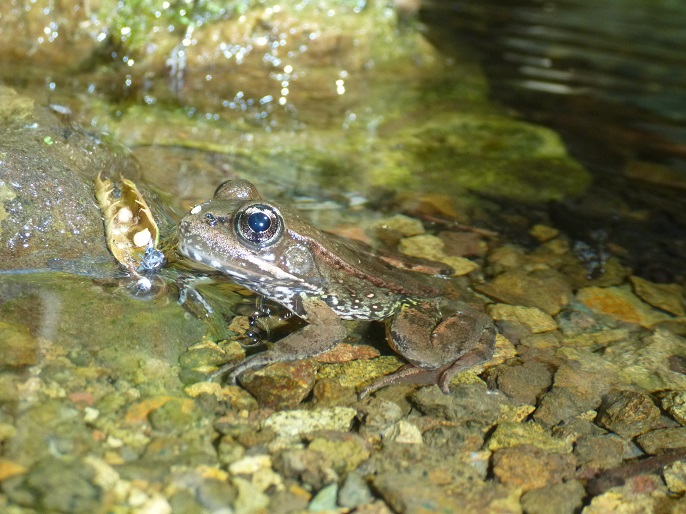|
You are viewing ARCHIVED content published online before January 20, 2025.
Please note that this content is NOT UPDATED, and links may not work. For current information,
visit https://www.nps.gov/aboutus/news/index.htm.

National Park Service
Contact: Kate Kuykendall, 805-370-2343 THOUSAND OAKS, Calif. – At least a handful of rare frogs have survived their first year in the Santa Monica Mountains, part of the first-ever effort to expand the range of California red-legged frogs in Southern California. “Most studies have found that only one to five percent of frogs in the wild make it to adulthood, so this is not a given,” said Katy Delaney, wildlife ecologist for the National Park Service. “They’re basically teenagers now since it takes them two years to reach adulthood. And they’re the first California red-legged frogs to grow up in the Santa Monica Mountains since the early 1970s.” Nearly 1000 eggs were transferred last spring from the isolated source population north of the 101 Freeway in the Simi Hills to two undisclosed stream locations in the Santa Monica Mountains. Mesh holding pens protected the eggs from predators as they developed into tadpoles. After a few months of feeding them algae, pellets and organic lettuce, Delaney and her team released the tadpoles last July. The exact number of juvenile frogs is impossible to predict because at this point biologists are relying simply on visual detection during daytime surveys, though they plan to individually mark the animals in the future. Biologists hope that enough frogs will survive to adulthood that they will begin breeding in the spring of 2016. Another group of more than 1000 tadpoles, transferred as eggs from the source population only a few months ago, were released earlier this week. The largest native frog in the Western United States, California red-legged frogs are named for the reddish coloring under their legs and belly. Because frogs have permeable skin that easily absorbs contaminants, they are considered an indicator species that provides important information about habitat health. Nationwide, USGS has documented precipitous declines among amphibians, which some speculate may be linked to habitat loss, invasive species, disease and pollution. In addition to the National Park Service, the project team includes California State Parks, the Mountains Recreation and Conservation Authority, the Santa Barbara Zoo, the Santa Monica Bay Restoration Commission, the U.S. Fish and Wildlife Service and U.S. Geological Survey's Western Ecological Research Center. Santa Monica Mountains National Recreation Area (SMMNRA) is the largest urban national park in the country, encompassing more than 150,000 acres of mountains and coastline in Ventura and Los Angeles counties. A unit of the National Park Service, it comprises a seamless network of local, state and federal parks interwoven with private lands and communities. As one of only five Mediterranean ecosystems in the world, SMMNRA preserves the rich biological diversity of more than 450 animal species and 26 distinct plant communities. To learn more, visit www.nps.gov/samo. ### |
Last updated: October 31, 2018
